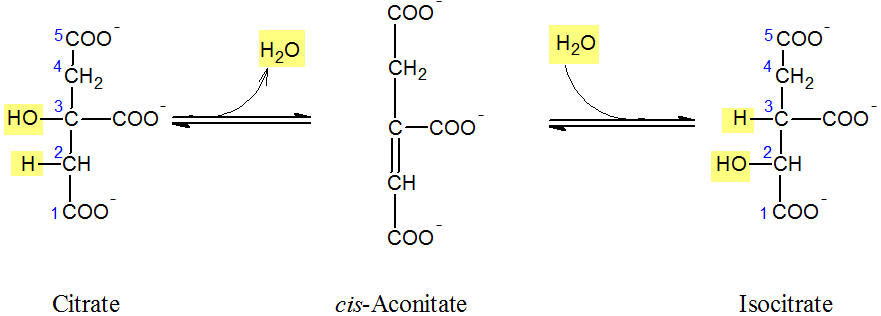Krebs cycle step 2
From Proteopedia
Second Step of the Krebs Cycle: Aconitase
Figure: Reaction of the isomerisation of citrate to isocitrate
In the second reaction of the Krebs cycle, the isomerisation of citrate to isocitrate takes place. As an intermediate, cis-aconitate is formed. Therefore, it is a two-step reaction sequence. In the first step, H2O is removed from the cireate molecule (see Figure). Thie dehydration ledas to the intermediate, cis-aconitate which is bound to the enzyme. In the second step, cis-aconitate is hydrated again. Therefore, the proton (from C2 to C3) and the OH group (from C3 to C2) swap places. A tretiary aclohol is transformed into a secondary alcohol.
This conversion is of utmost importance for the subsequent decarboxylation, because a tertiary alcohol (the citrate) can not be directly oxidized to a keto carboxylic acid.

